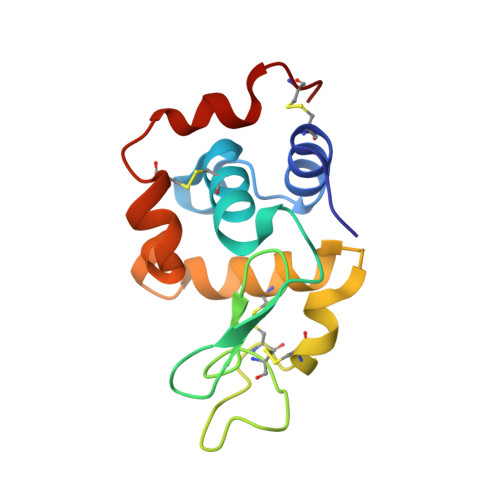Cinnamaldehyde and Phenyl Ethyl Alcohol promote the entrapment of intermediate species of HEWL, as revealed by structural, kinetics and thermal stability studies.
Seraj, Z., Groves, M.R., Seyedarabi, A.(2019) Sci Rep 9: 18615-18615
- PubMed: 31819148
- DOI: https://doi.org/10.1038/s41598-019-55082-1
- Primary Citation of Related Structures:
6AC2, 6AHH, 6AHL - PubMed Abstract:
Numerous efforts have been directed towards investigating the different stages leading to the fibrillation process in neurodegenerative diseases and finding the factors modulating it. In this study, using a wide range of molecular techniques as well as fibrillation kinetics coupled with differential scanning fluorimetry (DSF) and crystal structure determination of HEWL treated with cinnamaldehyde (Cin) and Phenyl ethyl alcohol (PEA) in their aroma form during fibrillation, we were able to identify the binding positions of Cin and PEA in HEWL. Additionally, crystal structures were used to suggest residues Thr43, Asn44, Arg45 and Arg68 as a plausible 'hotspot' promoting entrapment of intermediate species in the process of fibril formation in HEWL. We were also able to use DSF to show that Cin can significantly decrease the thermal stability of HEWL, promoting the formation of partially unfolded intermediate species. In conclusion, our data led us to emphasize that compounds in their 'aroma form' can influence the structure and stability of protein molecules and suggest reconsideration of HEWL as a model protein for fibrillation studies related to neurodegenerative diseases based on the initial structure of the proteins, whether globular (HEWL) or intrinsically disordered.
- Department of Biochemistry, Institute of Biochemistry and Biophysics, University of Tehran, Tehran, Iran.
Organizational Affiliation:




















